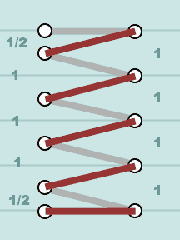So on a more serious note: Ian, have you found that spiral lacing makes a difference? I know that was the period method, so the point is probably moot, but I was wondering if there were any advantages to spiral lacing over something like a modern cross lacing.
Doug, I find that spiral lacing is easier, because it just requires one lace. Or if you do cross lace with one really long lace, you don't have to worry about making sure anything's even when spiral lacing. I also find that spiral lacing allows me to achieve the desired fit and tightness at each section of the garment. I'm a little more in control of tightness when compared to cross lacing, which is just evenly tight the whole way. It also may be a figment of my imagination but I don't notice spiral laced garments backing off over time. And finally, and possibly most importantly in this endeavor is that it is of course the historically correct way to do it. Virtually all examples of front closing garments on effigies and in artwork are spiral laced. There are a few exceptions, but they're exceedingly rare.
How do you spiral lace? (insert newb post)
Eva, spiral lacing requires that the lacing eyelets be sewn in an offset pattern. So unlike modern lacing where the opposing eyelets are directly across from each other, eyelets on a garment intended for spiral lacing are staggered. It is the appropriate lacing method for most historical garments up to the 18th century. The first and last eyelets are little different (there doubled up), you can see the difference here (this is in order to start the proper pattern). The reason for the half-spaced eyelets on the first and last set is to ensure you can start the spiral pattern and at the same time keep the garment from shifting and making the edges unaligned:

And here's the accompanying tutorial on the proper method of hole placement and how to lace the garment:
http://www.festiveattyre.com/p/the-zen-of-spiral-lacing.html